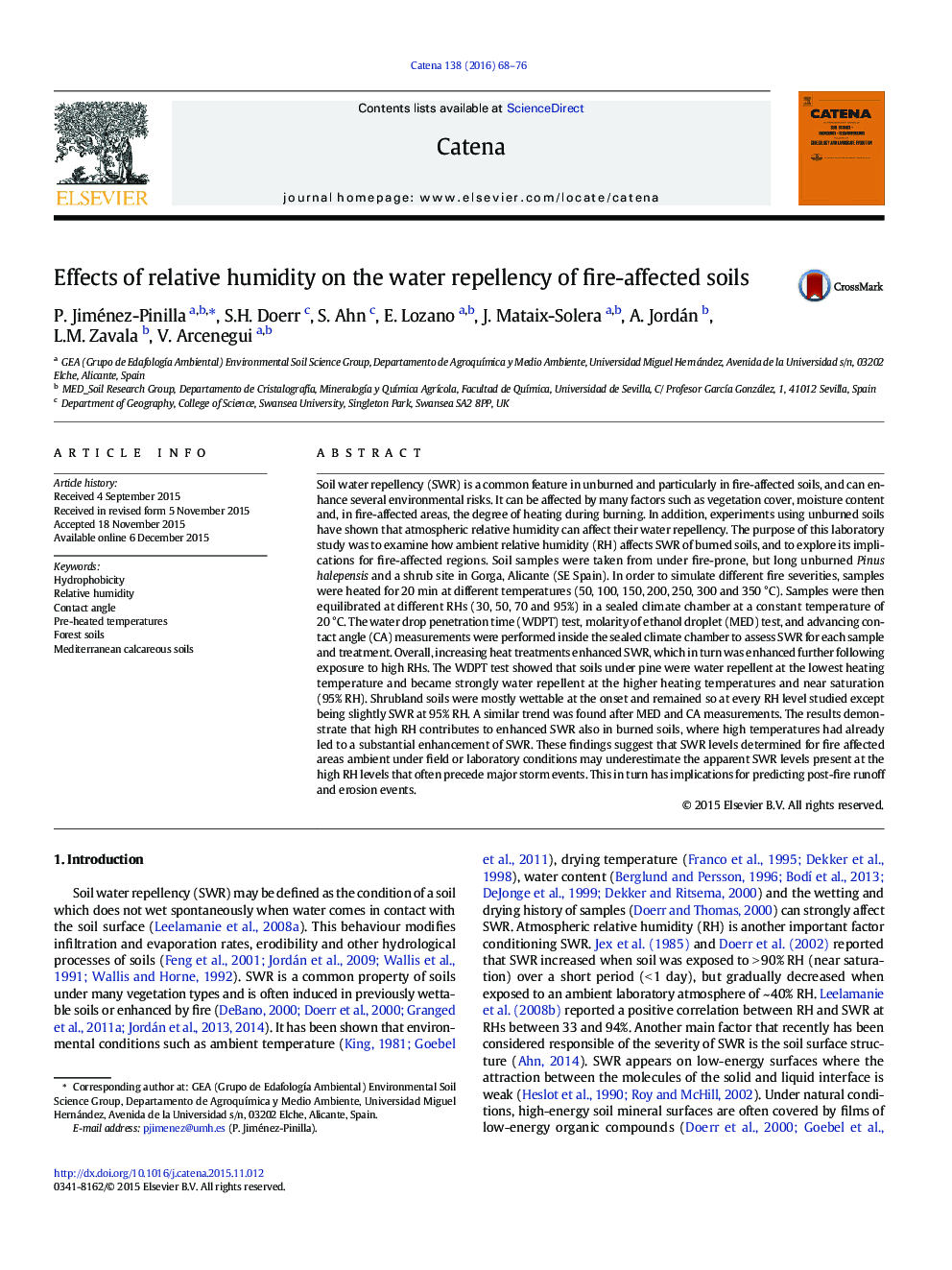| کد مقاله | کد نشریه | سال انتشار | مقاله انگلیسی | نسخه تمام متن |
|---|---|---|---|---|
| 4570985 | 1629214 | 2016 | 9 صفحه PDF | دانلود رایگان |
• An increasing trend of SWR was observed with increasing heating temperatures.
• SWR persistence and severity were substantially enhanced at the highest RH studied.
• RH effect was more noticeable at the highest heating temperatures.
Soil water repellency (SWR) is a common feature in unburned and particularly in fire-affected soils, and can enhance several environmental risks. It can be affected by many factors such as vegetation cover, moisture content and, in fire-affected areas, the degree of heating during burning. In addition, experiments using unburned soils have shown that atmospheric relative humidity can affect their water repellency. The purpose of this laboratory study was to examine how ambient relative humidity (RH) affects SWR of burned soils, and to explore its implications for fire-affected regions. Soil samples were taken from under fire-prone, but long unburned Pinus halepensis and a shrub site in Gorga, Alicante (SE Spain). In order to simulate different fire severities, samples were heated for 20 min at different temperatures (50, 100, 150, 200, 250, 300 and 350 °C). Samples were then equilibrated at different RHs (30, 50, 70 and 95%) in a sealed climate chamber at a constant temperature of 20 °C. The water drop penetration time (WDPT) test, molarity of ethanol droplet (MED) test, and advancing contact angle (CA) measurements were performed inside the sealed climate chamber to assess SWR for each sample and treatment. Overall, increasing heat treatments enhanced SWR, which in turn was enhanced further following exposure to high RHs. The WDPT test showed that soils under pine were water repellent at the lowest heating temperature and became strongly water repellent at the higher heating temperatures and near saturation (95% RH). Shrubland soils were mostly wettable at the onset and remained so at every RH level studied except being slightly SWR at 95% RH. A similar trend was found after MED and CA measurements. The results demonstrate that high RH contributes to enhanced SWR also in burned soils, where high temperatures had already led to a substantial enhancement of SWR. These findings suggest that SWR levels determined for fire affected areas ambient under field or laboratory conditions may underestimate the apparent SWR levels present at the high RH levels that often precede major storm events. This in turn has implications for predicting post-fire runoff and erosion events.
Journal: CATENA - Volume 138, March 2016, Pages 68–76
